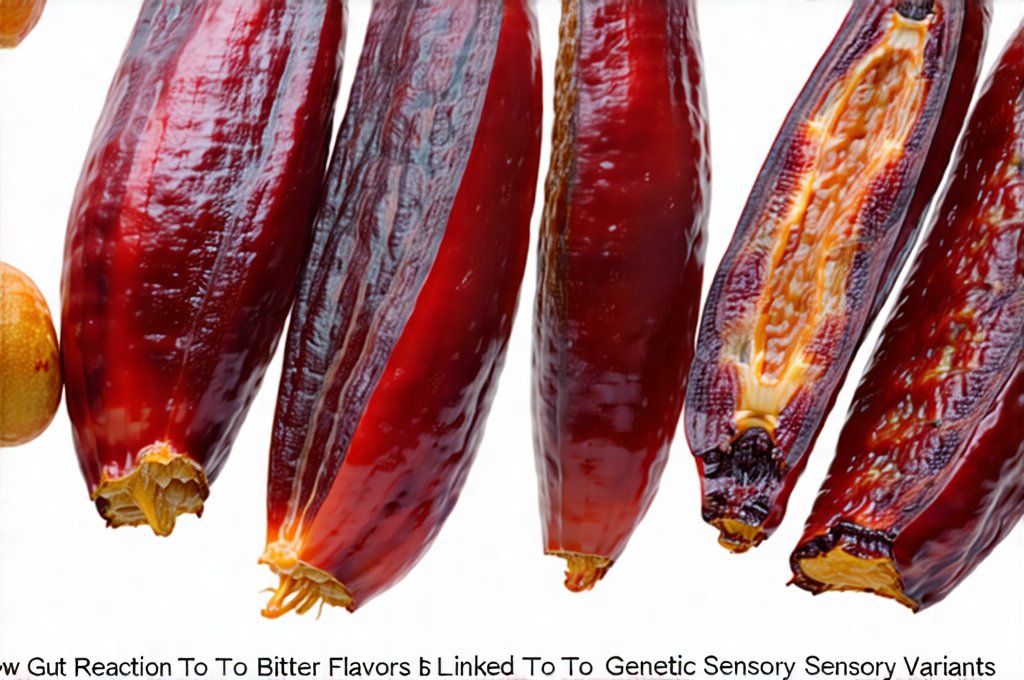Our senses profoundly shape our experience of the world, influencing everything from our dietary preferences to our emotional responses. Often, these sensory perceptions seem straightforward – we like sweet things, dislike bitter ones. However, beneath this surface lies a complex interplay between biology, genetics, and individual variation. The way we perceive flavors, in particular, is far more nuanced than simple preference; it’s deeply rooted in our genetic makeup and can explain why one person finds broccoli intensely bitter while another barely notices the taste. Understanding these intricacies isn’t just about satisfying culinary desires, but also about unraveling the complex connections between genetics, behavior, and overall health.
The seemingly simple act of tasting bitterness is a prime example of this complexity. Bitterness often signals potential toxins, acting as an evolutionary warning system to prevent us from consuming harmful substances. However, not all bitter compounds are dangerous, and our sensitivity to them varies significantly. This variation isn’t random; it’s largely determined by genetic differences in taste receptors – the proteins responsible for detecting flavor molecules. Recent research has illuminated how these genetic variants impact our gut microbiome and overall metabolic processes, revealing a fascinating link between what we taste and how our bodies function. The story of bitter flavors, therefore, is not just one of sensory perception but also of evolutionary biology, genetics, and increasingly, the intricate world within our digestive systems. If you’re struggling to understand gut health, it might be impacting your taste perceptions.
Genetic Basis of Bitter Taste Perception
The ability to taste phenylthiocarbamide (PTC) was one of the first traits conclusively linked to genetics in humans. Discovered in 1931 by Albert J. Clark, PTC tastes intensely bitter to approximately 70% of people, while the remaining 30% report it as tasteless. This difference is primarily attributed to variations in the TAS2R38 gene, which encodes a taste receptor protein specifically sensitive to PTC and other similar compounds found in cruciferous vegetables like broccoli, Brussels sprouts, and kale. Individuals carrying certain variants of this gene possess functional receptors that strongly bind to these compounds, resulting in a pronounced bitter taste. Others carry variations leading to non-functional or less sensitive receptors, diminishing the perceived bitterness.
This genetic variation isn’t just about individual preference; it has implications for dietary choices and potential health outcomes. People who are highly sensitive to bitter tastes might avoid cruciferous vegetables, potentially missing out on their associated nutritional benefits – these vegetables are rich in glucosinolates which have anti-cancer properties. Conversely, those with lower sensitivity may consume more of these vegetables, benefiting from their protective compounds. It’s important to note that TAS2R38 is just one piece of the puzzle; other genes also contribute to bitter taste perception and influence how we experience complex flavors. Understanding nutrient absorption can help you maximize benefits from your diet, regardless of sensitivity.
Furthermore, recent studies are uncovering interactions between TAS2R38 variants and the gut microbiome. The composition of our gut bacteria can be influenced by the foods we eat, and in turn, these bacteria can metabolize compounds like glucosinolates, altering their impact on taste perception and overall health. This bidirectional relationship highlights the intricate connection between genetics, diet, and the microbial ecosystem within us.
Bitter Taste & Gut Microbiome Interactions
The gut microbiome plays a crucial role in breaking down complex carbohydrates, synthesizing vitamins, and modulating immune function. Emerging research suggests that our genetic predisposition to bitter taste – specifically through TAS2R38 variants – can influence the composition of our gut microbiota. Individuals with higher sensitivity to bitterness may tend to avoid certain foods, leading to different bacterial communities developing within their digestive systems compared to those less sensitive. This is because dietary choices directly impact which microorganisms thrive in the gut.
For example, a diet low in cruciferous vegetables might result in lower levels of bacteria capable of metabolizing glucosinolates, potentially reducing the production of beneficial compounds like indole-3-propionic acid (IPA), known for its neuroprotective effects. Conversely, individuals who consume more of these vegetables may foster a gut microbiome enriched with species that efficiently break down glucosinolates and produce IPA. This highlights how our genes aren’t simply deterministic; they interact with our environment – in this case, diet – to shape the microbial landscape within us.
Moreover, some research indicates that compounds produced by the gut microbiome can actually influence taste receptor expression and function, creating a feedback loop between taste perception and gut health. Certain bacterial metabolites may modulate the sensitivity of TAS2R38 receptors or other taste receptors, further complicating our understanding of how we perceive bitter flavors. This intricate interplay suggests that personalized nutrition strategies based on an individual’s genetic profile and gut microbiome composition could be highly effective in optimizing dietary choices and promoting overall well-being. Understanding histamine reactions can also help you identify sensitivities.
Decoding Individual Differences in Bitter Taste
The TAS2R38 gene exists in several common variants, with PAV and AVI being the most studied. The PAV allele is typically associated with greater sensitivity to bitter taste, while the AVI allele corresponds to lower sensitivity. However, it’s rarely this simple. Individuals possess two copies of the TAS2R38 gene – one inherited from each parent – resulting in three possible genotypes: PP (two copies of PAV), AV (one copy of each), and AA (two copies of AVI). The genotype significantly influences taste perception, but other genetic factors also play a role.
Beyond TAS2R38, other genes involved in taste transduction pathways, such as those encoding for different bitter taste receptors (the TAS2R family contains over 25 functional members) and signal processing molecules, contribute to the overall experience of bitterness. This complex genetic architecture explains why some individuals with the same TAS2R38 genotype may still exhibit varying degrees of sensitivity to bitter flavors. Furthermore, environmental factors like age, smoking habits, and exposure to different foods can also influence taste perception over time.
Implications for Food Choices & Dietary Habits
Our sensitivity to bitterness profoundly influences our food choices and dietary patterns. Individuals who are highly sensitive to bitter compounds may avoid vegetables like broccoli, kale, or Brussels sprouts, potentially missing out on the health benefits associated with these nutrient-rich foods. This can lead to a less diverse diet and an increased risk of nutritional deficiencies. Conversely, those with lower sensitivity may be more inclined to incorporate these vegetables into their diets, benefiting from their antioxidant and anti-inflammatory properties.
Understanding this genetic influence can help tailor dietary recommendations to individual preferences and needs. For example, strategies like preparing cruciferous vegetables in ways that reduce bitterness – such as roasting or combining them with sweeter ingredients – could encourage consumption even among those highly sensitive to bitter tastes. Personalized nutrition approaches based on an individual’s genotype and taste preferences may also prove effective in promoting healthier eating habits and reducing the risk of chronic diseases. If you experience nausea when trying new foods, it can be a sign to investigate your gut health.
The Future of Flavor Genetics & Personalized Nutrition
Research into flavor genetics is rapidly advancing, with scientists identifying more genes involved in taste perception and uncovering the complex interplay between genes, diet, and the gut microbiome. This knowledge paves the way for truly personalized nutrition strategies tailored to an individual’s genetic profile and metabolic needs. Imagine a future where dietary recommendations are based on your unique taste receptor variants, gut microbiome composition, and overall health goals – optimizing your food choices not only for enjoyment but also for optimal well-being.
Technologies like genome sequencing and microbiome analysis are becoming increasingly accessible and affordable, making personalized nutrition more attainable than ever before. As we continue to unravel the mysteries of flavor genetics, we can unlock a deeper understanding of how our senses shape our behavior, influence our health, and ultimately, define our individual experiences with food. The journey from gene to plate is complex, but it holds immense promise for creating healthier and more satisfying lives. It’s fascinating to see how gut bacteria respond to different diets too! And don’t underestimate how gut health influences stress. Finally, learning if your gut is healing can be a great motivator to improve dietary choices.


















